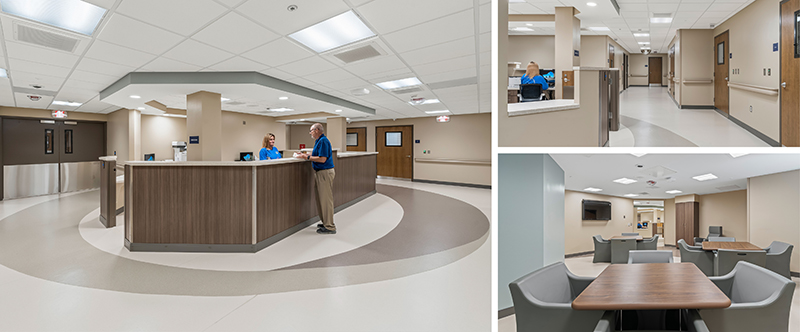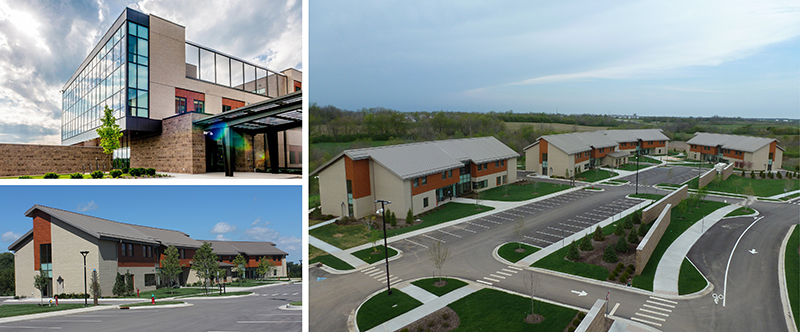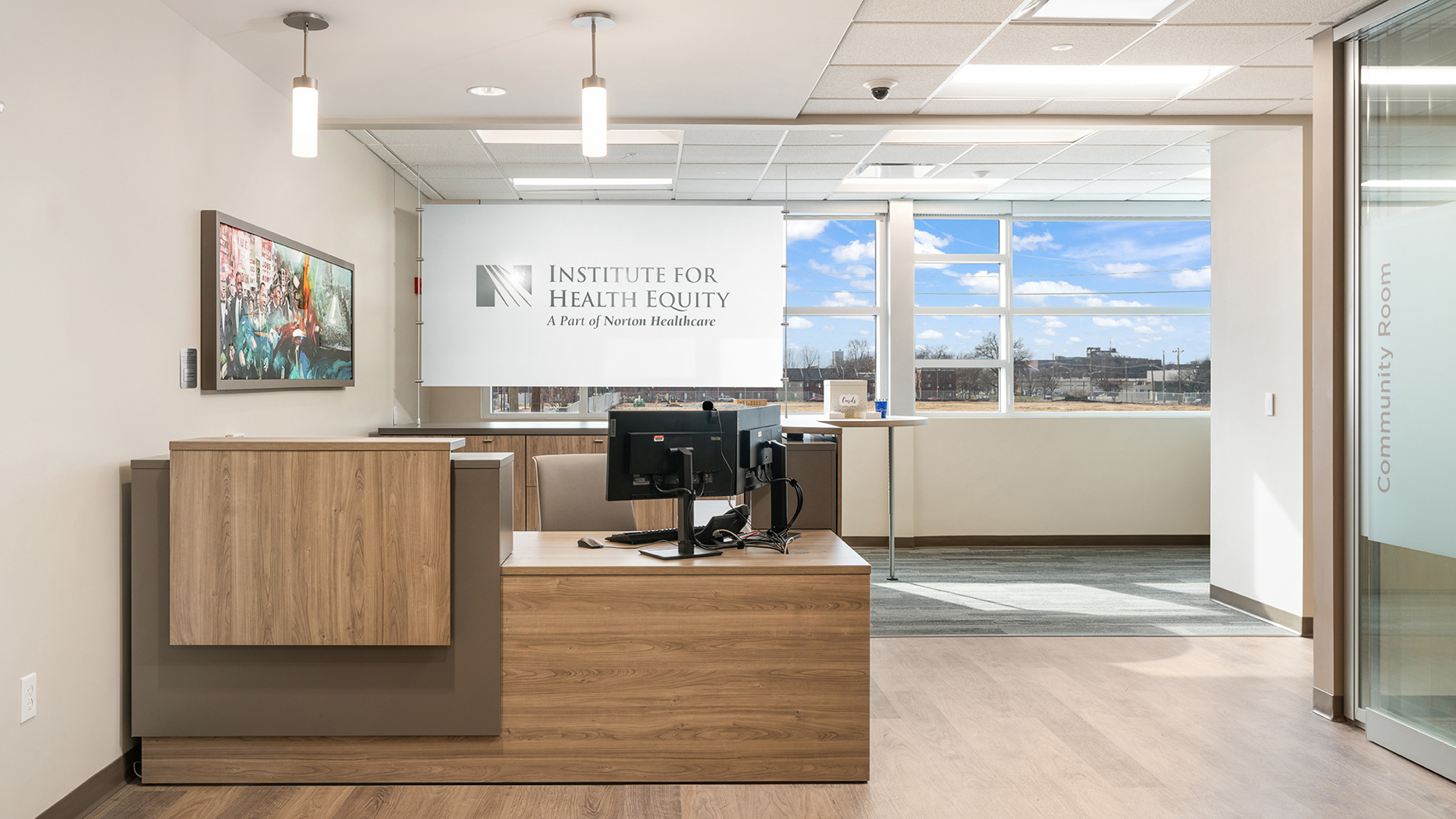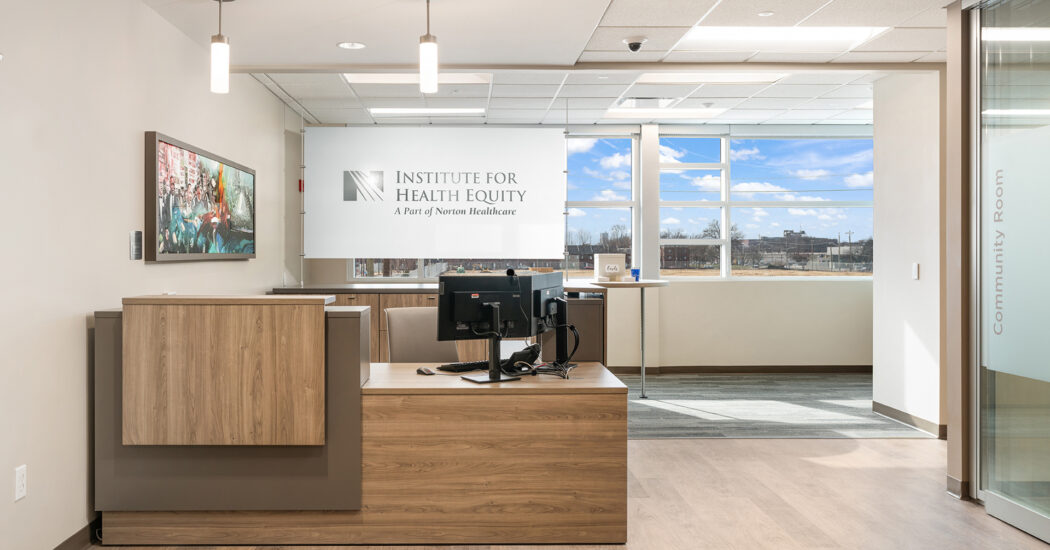Designing With Dignity: How Behavioral Health Spaces Heal and Protect
-
Category
Studio-Healthcare -
Posted By
Schmidt Associates -
Posted On
Aug 28, 2025
Creating Environments That Promote Healing, Safety, and Dignity
Behavioral health facilities are among the most complex spaces to design. They must meet rigorous safety standards while fostering calm, comfort, and recovery. At Schmidt Associates, we believe thoughtful, integrative design can achieve all of that—and more.
Together with our clients, architects, interior designers, and in-house engineers, we take a unified approach to every behavioral health project with one mission: to protect, empower, and heal.
We begin by deeply understanding the needs of the people who will use these environments, designing beyond technical requirements to create spaces that truly serve.
Curious how we approach these complex environments? Explore the key strategies that guide our behavioral health design work.
Design That Prioritizes People
Behavioral health environments demand more than functional buildings. It’s not just about what a space does, it’s about how it feels. Through our integrative team and people-centered process, we embed best practices in safety, operational flow, and therapeutic support into every design.
Our design principles translate into physical spaces through the following strategies:
- Safety With Dignity: Ligature-resistant fixtures, clear sightlines, and tamper-proof materials ensure safety, while biophilic design and calming finishes uphold dignity.
- Therapeutic Environments: Natural light, acoustic privacy, and trauma-informed planning reduce agitation and support healing.
- Operational Efficiency: Optimized layouts improve visibility, reduce staff fatigue, and streamline care delivery.
- Future-Ready Flexibility: Modular planning, durable materials, and integrated telehealth infrastructure prepare spaces for evolving needs.
Real-World Impact: Featured Projects
Our behavioral health projects bring these principles to life. Every design decision supports recovery, resilience, and dignity—while meeting the practical needs of patients and providers.
Twin Lakes Behavioral Health Unit—Leitchfield, Ky.

To address growing behavioral health needs in rural areas, Owensboro Health transformed an inpatient unit into a 12-bed behavioral health space for older adults. The renovation prioritized safety, staff visibility, and a calming atmosphere.
Key impacts:
- Expanded the nurse’s station for clearer sightlines, faster interventions, and increased patient safety
- Created designated areas for group activities, quiet reflection, seclusion, and clinical support
- Enhanced safety and compliance while reducing the need for patients to travel long distances for care
Eastern State Hospital & Central Kentucky Recovery Center—Lexington, Ky.

This secure behavioral health campus serves high-acuity patients with crisis stabilization and forensic care. The adjacent recovery center supports residential treatment and reintegration.
Key impacts:
- Created clear separation between public and private zones to enhance safety and dignity
- Located clinical spaces near therapy, education, and recreation areas to streamline care
- Integrated secured outdoor areas, natural light, and visual supervision to support trust and transition
Harshaw Family Grief Counseling Center—Louisville, Ky.

This new counseling facility offers mental health support for individuals and families processing grief. Every detail—from color palettes to spatial design—fosters emotional well-being.
Key impacts:
- Used frosted glass, sound masking, and thoughtful sightlines to ensure privacy
- Included spaces for art therapy, meditation, and community events
- Established the foundation for a compassionate, holistic campus vision
Institute for Healthcare Equity—Louisville, Ky.

Developed with Norton Healthcare, this facility increases access to behavioral health and wellness services for underserved communities. It blends clinical care with community connection.
Key impacts:
- Designed flexible rooms for social services, telehealth, and education
- Incorporated warm finishes, a fireplace, and a water feature to create a welcoming, stigma-free environment
- Fostered long-term engagement through inviting, adaptable spaces
Shaping the Future of Behavioral Health Design
As behavioral health needs evolve, so must the environments that support them. Our role is to anticipate change, design with purpose, and build with empathy.
From layout to lighting, every choice we make supports recovery, resilience, and respect. We are honored to collaborate with healthcare providers to meet today’s challenges—and prepare for tomorrow’s.
Design has the power to heal. Let’s create spaces that support recovery, resilience, and dignity for every person who walks through the door.









